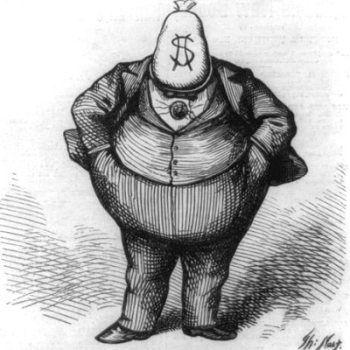Several terrific bloggers I follow are visiting Sri Lanka this week with World Vision, an evangelical relief and development NGO that does important work all over the world.
Among the writers I follow on this trip are: Tony Jones (Theoblogy), Joy Bennett (Joy in This Journey), Matthew Paul Turner (Jesus Needs New PR), Darrell Dow (Stuff Fundies Like), and Shawn Smucker (“Shawn Smucker“).
World Vision sponsors trips like this as a way to highlight the good work they’re doing. So the obvious next question is: Are they doing good work?
In World Vision’s case, the answer is yes. I’ve known and worked with dozens of World Vision folks over the years and I’ve long been impressed with the agency’s effectiveness and integrity.
I could have said that I’ve been impressed by their dedication and commitment — that’s also true. But, to be frank, dedication and commitment aren’t nearly as important as effectiveness and integrity. A charity that seeks my support won’t get it simply be assuring me that they have the best of intentions. I want to know that what they’re doing works. I want to see results.*
And World Vision is a professional operation. They’ve gotten really good at this change-the-world stuff. They get results and actually change the world.
A good example of that can be seen in the celebration the visiting bloggers attended yesterday in a place called Willuwa. World Vision is leaving the village. They’re done there. The work they did will continue, but it will, from now on, be performed by local leaders trained and empowered to address local needs and local concerns in local ways.
World Vision has a 15-year limit on how long it will work in an Area Development Project. Thus, from day one in an area, the staff is challenged to partner with local organizations, to teach skills, and to prepare for the hand-off a decade-and-a-half hence.
… In Willuwa, World Vision arrived 15 years ago. They’ve worked with the schools, raised water towers, built roads, and increased health and sanitation.
For example, in 1997, 42 percent of homes had water-sealed latrines. Now 87 percent do. In 1997, 40 percent of children were underweight. Now 16 percent are. In 1997, there were 0 eco-friendly gardens. Today, there are over 2,000.
Those results Tony cites are tangible, meaningful changes. But the biggest change is the people of Willuwa have now been empowered to continue that trajectory and to control their own economic development.
World Vision’s 15-year rule is part of its structure and its philosophy. And it’s an example of how their philosophy has been built into their structure to ensure that good intentions become actual results.
That’s part of what I mean by “integrity.” That also refers, of course, to financial accountability and low overhead,** and World Vision is good on that score. But it’s more than just that. There’s more to being effective and honest than simply not being a skimmer, a scammer or a pocket-liner.
One World Vision old-timer told me a story from back in the day when the agency commissioned a study to measure the effectiveness of its fundraising materials. The study showed that one type of visual, far and away, was most effective for enticing would-be donors to contribute. More than any other kind of image, this one made Americans respond — more people contributed, and they contributed more. This image showed an older white male surrounded by visibly impoverished, needy, dark-skinned children. The consultants who conducted the study said World Vision could raise more money — a lot more money, they said — by employing that kind of image.
As my friend tells the story, World Vision not only refused this suggestion, but set out to avoid any use of that kind of image. In their view, the cost was too high. Images that reinforce notions of paternalistic benevolence and the white-man’s burden were the antithesis of how they understood their mission. You can’t empower the poor and defend their dignity by raising money with images that undermine those very ideals.
And but so, the point here being, I like World Vision.
It is, of course, a sectarian agency. It’s a bunch of Christians doing what they do because of their Christian faith. But — as Darrell Dow’s description of that celebration in Willuwa illustrates — the agency’s work itself is not sectarian.
“World Vision does not proselytize,” Matthew Paul Turner writes. It “respects, values and seeks to help” anyone in need:
There are no secret agendas. World Vision seeks to live out God’s love without expectations, to offer love, help, aid, and hope to whoever needs it, regardless of their creed, religion, or lifestyle.
They do good work. And they do it well.
Go and tell John what you have seen and heard: the blind receive their sight, the lame walk, the lepers are cleansed, the deaf hear, the dead are raised, the poor have good news brought to them. And blessed is anyone who takes no offense at me.
– – – – – – – – – – – –
* Not that a demand for tangible results is always a prerequisite for getting my support. In the past I’ve donated to things like Wes Jackson’s Land Institute. Jackson is a bit of a mad scientist whose dream is the development of perennial agriculture. No revolutionary breakthroughs yet in his quest for an edible prairie, but the Land Institute gets my support, to quote Graham Chapman, because of “the enormous possibilities should he succeed.”
** Low overhead cost is often rightly emphasized as an indicator of responsible charity, but it shouldn’t be an absolute standard. Context and mission matter. Some efforts — including many forms of one-on-one direct care for those who require it — are intrinsically labor-intensive. The people providing that care deserve to be paid a decent wage. If those wages are measured as “overhead,” the overhead costs will be higher because they need to be higher.












